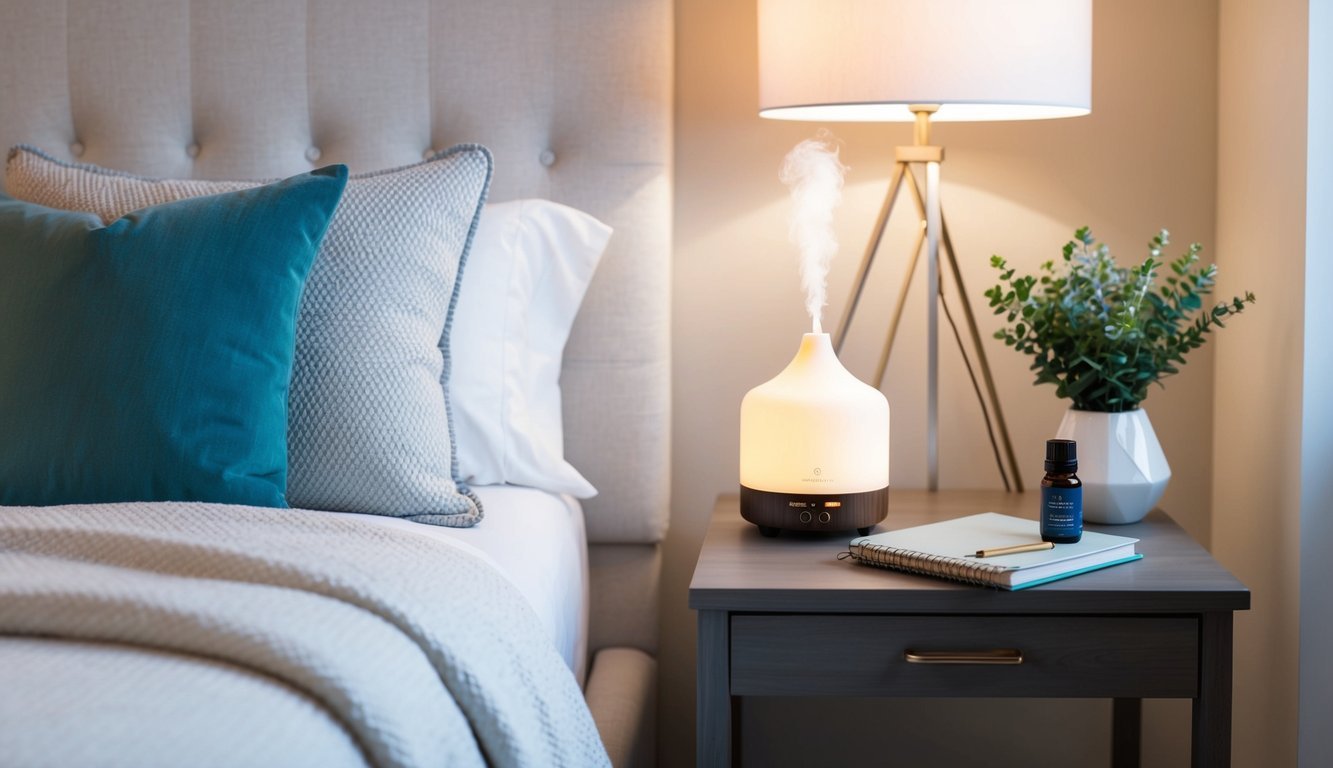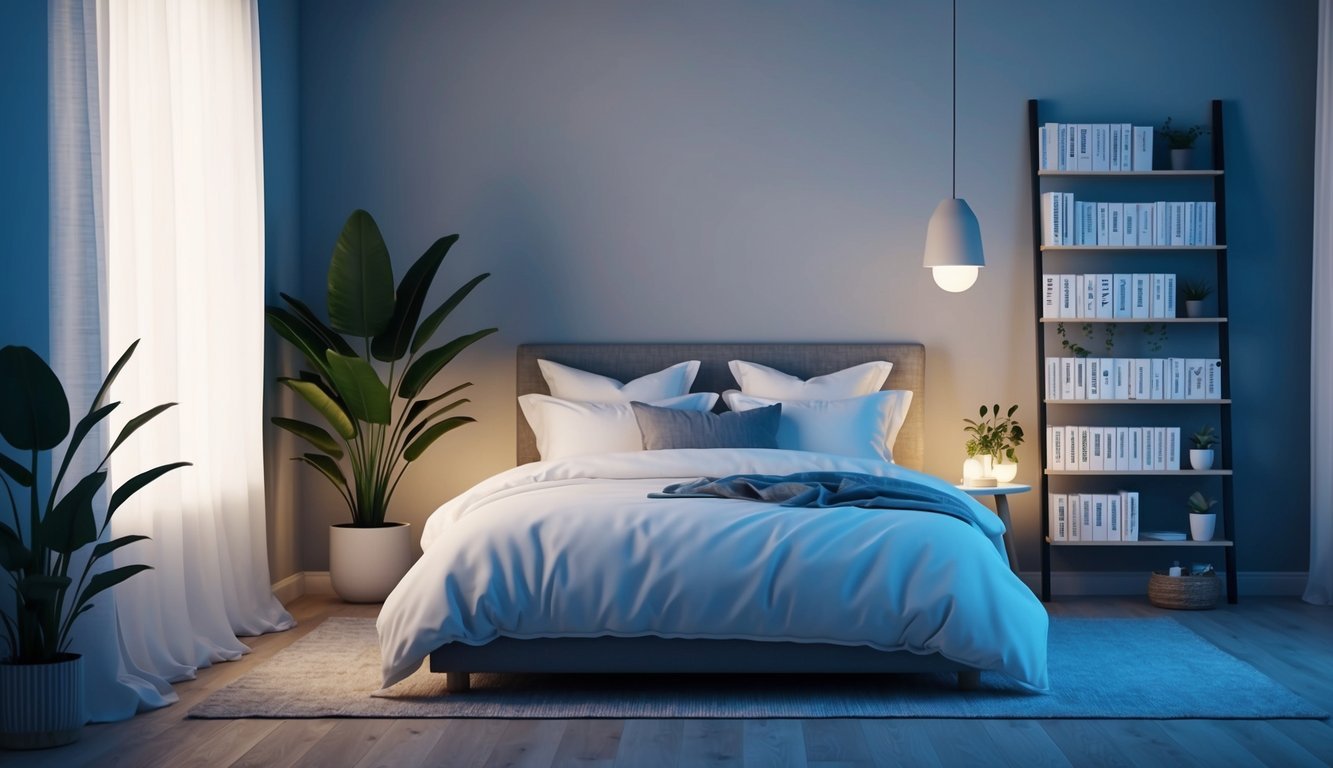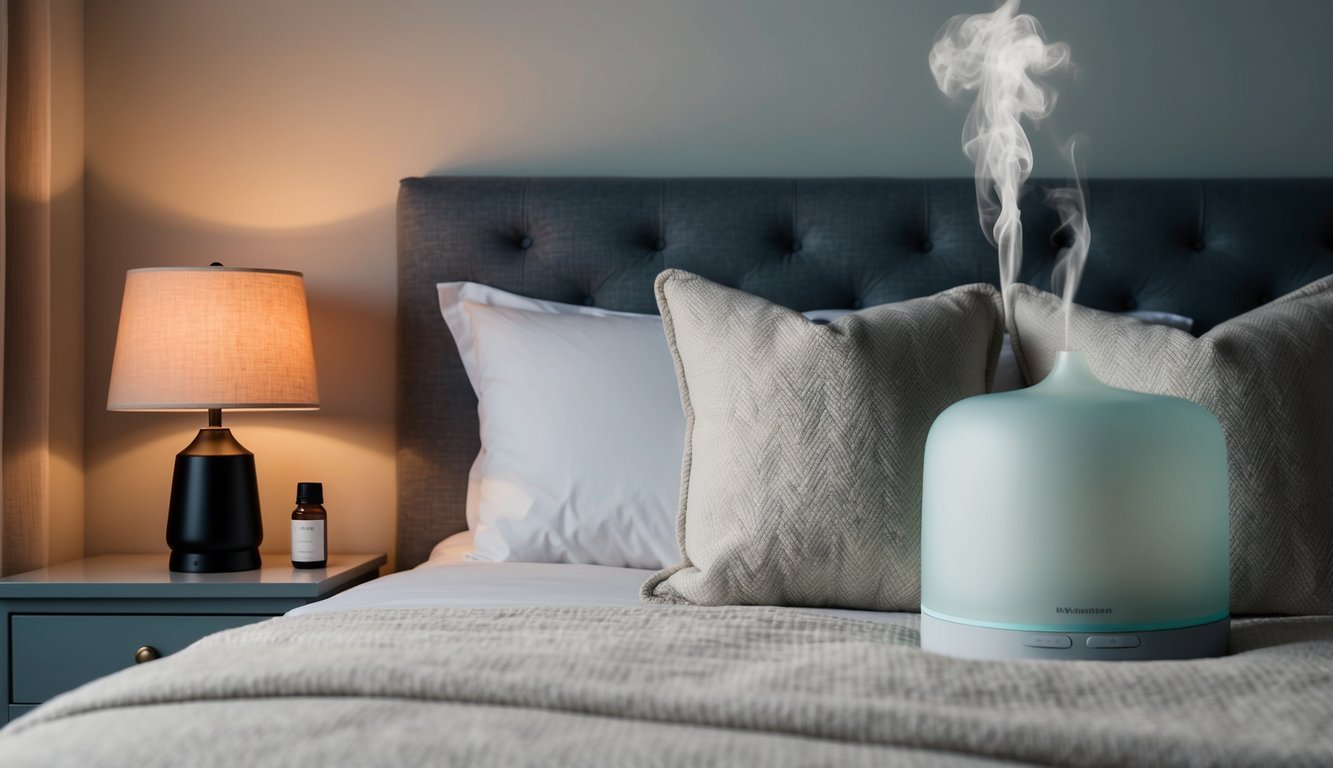PsychNewsDaily Publishers
100 Summit Drive
Burlington, MA, 01803
Telephone: (320) 349-2484
PsychNewsDaily Publishers
100 Summit Drive
Burlington, MA, 01803
Telephone: (320) 349-2484
Quality sleep enhances mood, focus, and productivity. Establishing a consistent bedtime routine, creating a calming environment, and practicing relaxation techniques improve overall sleep quality.

Sleep is essential for everyone. It helps the body and mind recover from daily activity. Quality sleep can lead to better mood, focus, and productivity.
Good sleep hygiene is key. This means creating a comfortable sleep environment and having a consistent bedtime. It helps keep the body’s circadian rhythm in balance.
The parasympathetic nervous system plays a role in sleep. It helps the body relax, making it easier to fall asleep. When we’re stressed, it can struggle, leading to poor sleep.
Sleep deprivation can cause many issues. It may lead to tiredness, irritability, and even health problems. Getting enough sleep improves sleep efficiency, allowing a person to feel more rested.
Melatonin is a hormone that helps control sleep-wake cycles. Higher melatonin levels at night signal the body it’s time to sleep. Staying away from screens before bed can help boost these levels.
To improve sleep quality, it’s important to:

Creating a good bedtime routine is essential for improving sleep quality. This involves setting up a comfortable sleep environment and understanding how diet and exercise affect sleep patterns.
A quiet and dark room can significantly enhance sleep quality. Keeping the bedroom cool, ideally between 60-67°F, helps the body relax. It’s also helpful to limit noise with earplugs or white noise machines.
Removing distractions is key. You should store away devices like phones and tablets. The blue light from screens can interfere with melatonin production, making it harder to wind down.
Adding cozy elements like blankets or a favorite pillow can create a welcoming atmosphere. Plants or soothing colors might also promote a calming space.
What a person eats can impact how quickly they fall asleep. Heavy meals and caffeine should be avoided a few hours before bedtime. Instead, light snacks such as bananas or almonds can help.
Regular exercise also plays an important role. Routine physical activity helps regulate sleep patterns, allowing an easier transition to sleep. Aim for at least 30 minutes of moderate exercise most days.
Timing is important too. It’s best for workouts to be completed at least a few hours before bed. This way, the body can cool down and prepare for sleep effectively.

Finding ways to relax before bed is essential for a good night’s sleep. Techniques like progressive muscle relaxation, mindfulness, and visualization can help calm the mind and body. Each method offers a unique approach to reduce stress and anxiety, making it easier to fall asleep.
Progressive muscle relaxation (PMR) involves tensing and then relaxing each muscle group in the body. It helps release physical tension that often accompanies stress.
To practice PMR, you start by taking a few deep breaths. Next, you focus on one muscle group, such as the feet, and tense those muscles for a count of five. After that, you relax the muscles and notice the difference.
Continuing this process through the legs, abdomen, arms, and finally the face can create a deep sense of calm. This method not only aids in relaxation but also encourages mindfulness about bodily sensations.
Mindfulness involves focusing on the present moment without judgment. This practice can significantly reduce anxiety and help individuals let go of the day’s stressors.
To practice mindfulness before bed, you can sit or lie down comfortably and take slow, deep breaths. Then, concentrate on your breath, feeling each inhale and exhale. If thoughts arise, acknowledge them and gently bring the focus back to breathing.
Practicing this technique for even a few minutes can create a peaceful state of mind, promoting better sleep.
Visualization is a powerful technique that involves imagining serene and peaceful scenes. This can help the mind shift away from worries and stress.
To begin, find a comfortable position and close your eyes. Then, take deep breaths and picture a calming place, such as a quiet beach or a forest.
Imagining the sounds, smells, and feelings of this place can enhance relaxation. Engaging the senses makes the visualization more vivid and effective.
For added benefit, combining visualization with breathing techniques, like the 4-7-8 method, can deepen the relaxation experience, easing the transition to sleep.

Using sleep mantras and affirmations can significantly improve the quality of rest. These techniques help calm the mind, enhance focus, and make it easier to fall asleep. The right mantra can create a peaceful mindset, while affirmations promote positive thinking.
Selecting a calming mantra is crucial for a good night’s sleep. The mantra should resonate personally and be easy to repeat. Examples of simple mantras include:
These phrases should be soothing and help reduce stress. A mantra that feels good can create a sense of security and comfort. When choosing, think about what feelings they evoke. It might be beneficial to test different phrases to see which ones help focus the mind and facilitate relaxation during sleep.
Affirmations are powerful tools for building a positive mindset. To incorporate them, start each day with a few positive statements. These could be:
Repeating these affirmations before bed can create a calming environment. A nightly routine might include dimming the lights, taking deep breaths, and softly repeating selected affirmations. This practice encourages letting go of worries and promotes focus on tranquility. Regular use of affirmations not only enhances sleep but also contributes to greater overall well-being.

Many people struggle with sleep issues that can disrupt rest and well-being. By focusing on specific challenges like racing thoughts, anxiety, and sleep disorders, individuals can learn effective strategies to improve their sleep quality.
Racing thoughts and anxiety can keep someone awake at night. These are common barriers to restful sleep. One useful technique is paradoxical intention. This method encourages individuals to try to stay awake instead of forcing sleep. This shift can reduce anxiety around sleep, making it easier to relax.
Another helpful approach is to keep a sleep diary. This allows individuals to track their thoughts and feelings before bed. Recognizing patterns can provide insights into negative emotions that disrupt sleep. Simple relaxation exercises, such as deep breathing or light stretching, also help calm the mind.
Sleep disorders like insomnia can greatly affect a person’s life. Treating these disorders often requires a tailored approach. Seeking help from a healthcare professional is essential if sleep problems persist.
Practicing good sleep hygiene, such as maintaining a consistent sleep schedule, can also aid in overcoming these challenges. Limiting screen time before bed and creating a calming bedtime routine sets the stage for better sleep.
For those with depression, addressing underlying issues is crucial. Combining therapy with relaxation techniques can effectively manage sleep disturbances linked to negative emotions.

Falling asleep can often be a challenge. Certain techniques can help speed up this process by promoting relaxation and focusing the mind. Below are some advanced methods that individuals can use to fall asleep faster.
The Military Method is a technique that helps people drift off in just a few minutes. It involves a specific sequence to prepare the mind and body for sleep.
Relax the Face: Start by relaxing the muscles in the face, including the jaw and tongue. This releases tension.
Drop Shoulders: Allow the shoulders to drop as low as possible. This helps to ease tension in the upper body.
Breathe Deeply: Take a deep breath and exhale slowly. This can calm the mind.
Mind Clearing: Spend 10 seconds emptying the mind. Visualizing a peaceful scene can help.
Fall Asleep Quickly: After this routine, many find they can fall asleep within minutes.
Guided meditation for sleep is another effective way to promote faster sleep onset. This method involves listening to a meditation that leads the individual into a relaxed state.
Find a Comfortable Position: Lying down comfortably prepares the body for relaxation.
Focused Breathing: Engage in breath work to calm the mind. Inhale deeply for four seconds, hold for seven, and exhale for eight (the 4-7-8 method).
Follow the Guide: Use a sleep meditation recording to guide through relaxation. The soothing voice and imagery can create a mental escape.
Mindfulness Practice: Practicing mindfulness during meditation enhances the experience by keeping the mind focused on the present.
Incorporating white noise and soundscapes into a sleep routine can help people fall asleep more quickly. These sounds drown out distractions and create a calming environment.
White Noise Machines: These devices produce a consistent sound that masks background noises.
Nature Sounds: Listening to rain, ocean waves, or soft music can create a serene atmosphere.
Setting the Volume: It’s best to keep the volume at a soothing level that promotes relaxation without being jarring.
Consistent Use: Regularly using these sounds encourages the brain to associate them with sleep, reducing sleep latency.

Many people seek to enhance their sleep experience through mantras and meditation techniques. This section explores helpful mantras, methods to improve sleep quality, and the differences between various practices.
Common Vedic mantras for sleep include “Om Shanti,” which promotes peace, and “Mahavishnu Mantra,” known for its calming effect. Repeating these mantras can create a tranquil environment that aids in falling asleep.
Sanskrit mantras such as “Soham” and “Om Namah Shivaya” are popular choices. These mantras help quiet the mind, allowing for deeper relaxation and improved sleep quality.
Mantras like “Om” and “Gayatri Mantra” are known to facilitate deep sleep. They can help slow down thoughts and bring the mind into a restful state.
Sleep meditation focuses on mindfulness and relaxation techniques to ease the mind, while sleep mantras involve the repetition of specific phrases. Both practices aim to promote sleep but use different approaches to achieve that goal.
Techniques like establishing a bedtime routine, minimizing screen time before bed, and using breathing exercises can enhance sleep. Creating a calm sleeping environment also plays a significant role in helping one fall asleep faster.
Many people find sleep mantras effective in helping them relax and drift off to sleep. The rhythmic quality of mantras can be soothing and create a sense of comfort during the night.